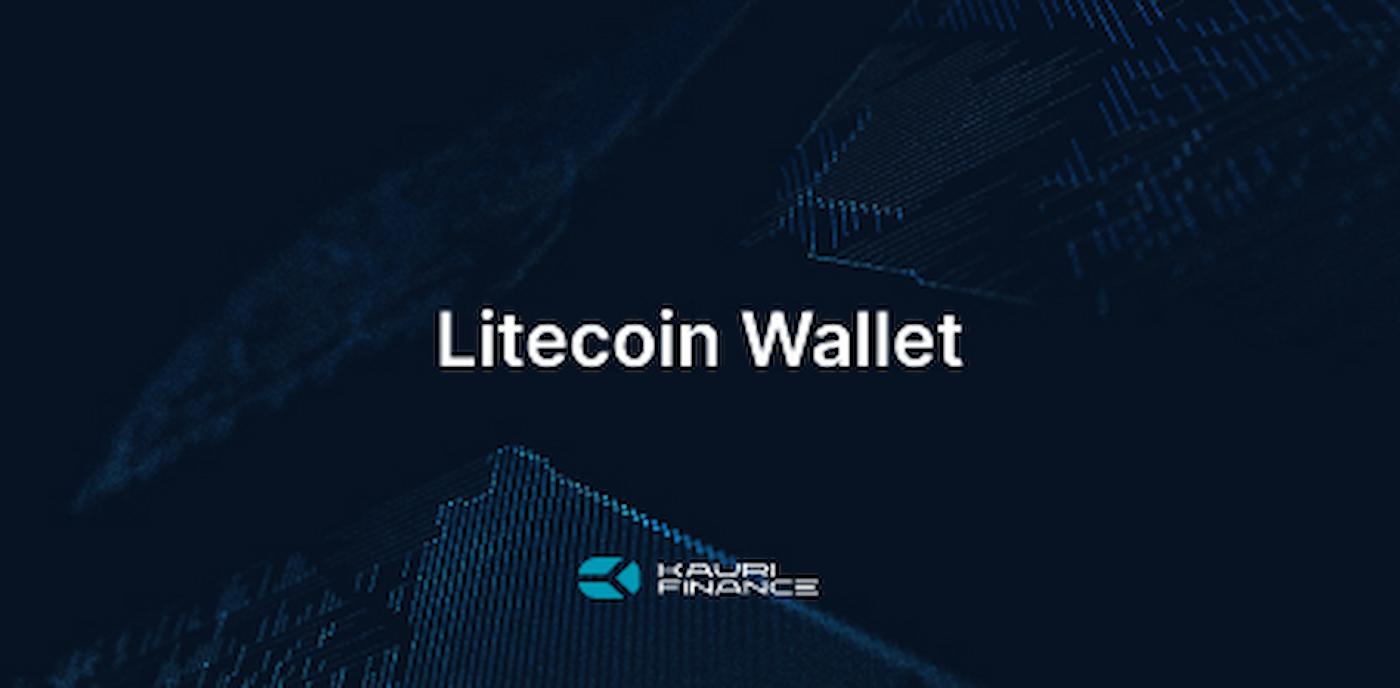
Litecoin Wallet

Litecoin (LTC) stands as an alternative cryptocurrency founded in October 2011 by Charles "Charlie" Lee, a former engineer at Google. While Litecoin was derived from Bitcoin's open-source code, it boasts several adjustments. Similar to Bitcoin, Litecoin operates on a decentralized global payment network, devoid of control by any central authority. However, Litecoin distinguishes itself with a faster block generation rate and the use of Scrypt (pronounced es-scrypt) as its proof-of-work scheme, setting it apart from Bitcoin.
Litecoin was introduced with the aim of enhancing Bitcoin's functionality in several aspects. One significant improvement was the development of a new hashing algorithm called Scrypt by Charlie Lee. This algorithm supported Litecoin's faster transaction speeds compared to Bitcoin. Bitcoin typically processes transactions at a slower rate, averaging about five transactions per second. Additionally, generating new blocks on the Bitcoin blockchain can take approximately 10 minutes.
Since its inception, Litecoin has continually implemented features aimed at enhancing transaction speed while maintaining network security and integrity. One notable project on its agenda is the integration of MimbleWimble into the blockchain. MimbleWimble is a privacy protocol that builds upon confidential transactions to obscure information such as transaction amounts. Advocates believe that MimbleWimble has the potential to reduce block size and improve scalability. In early 2019, Charlie Lee announced Litecoin's intention to pursue the development of MimbleWimble, a project that is currently underway as of October 2023.
FAQ
What is a Litecoin wallet?
A Litecoin wallet is essentially a digital tool that allows users to manage their Litecoin transactions. It's like a personal interface to the Litecoin blockchain network, enabling users to send, receive and store Litecoin securely. One of the key functions of a Litecoin wallet is to safeguard your private key, which is essential for authorizing transactions. It also generates a public key, known as an address, which others can use to send you Litecoin. Understanding how Litecoin (LTC) wallets work is important for anyone looking to venture into cryptocurrency investment, whether it's Litecoin or other digital assets like Monero, Dogecoin, or Solana.
Litecoin wallets come in various forms, each offering distinct features and security levels:
- Desktop Wallets: These are downloaded and installed on your computer, providing full control over your wallet and private keys. They offer high security but can be susceptible to malware and hardware issues, so regular backups are essential.
- Mobile Wallets: Installed on smartphones, these offer convenience and portability. While less secure than desktop wallets, they are suitable for everyday transactions. Some mobile Litecoin wallets also include additional features like QR code scanning.
- Hardware Wallets: These are physical devices that store your private keys offline, providing the highest level of security. They are immune to computer viruses, making them ideal for users with significant Litecoin holdings.
Choosing the right wallet depends on your needs and desired level of security. For large holdings, a hardware wallet offers the best protection, while mobile wallets are convenient for smaller transactions on the go. Understanding your options is key to successful cryptocurrency management.
How to get a Litecoin wallet?
Setting up a Litecoin (LTC) wallet is a straightforward process with various options available to manage your Litecoin holdings. Each wallet comes with its unique features, offering different levels of ease of use and security.
You have the choice to use the KAURI crypto wallet in two ways: as a versatile multi-currency wallet, accommodating over 400 different crypto assets, or as a specialized mono-wallet, like a Litecoin web wallet. This versatility allows you to securely manage all your Litecoin (LTC) tokens effortlessly.
Ensuring the security of your wallet is crucial. The first step towards secure storage is safeguarding your seed phrase offline. This seed phrase typically consists of 12 or 24 randomly generated words, providing you with access to your funds even if you forget your password or encounter a computer crash. It's recommended to write down your seed phrase on a piece of paper and store it in a secure location. Avoid taking a picture of your seed phrase, as devices with cameras connected to the internet could pose a security risk by potentially exposing your seed phrase and, consequently, your coins to hackers.
With the KAURI Litecoin wallet app, users can swiftly build their own portfolio without being affected by price fluctuations during exchanges. To create a Litecoin wallet, simply download the KAURI Litecoin wallet app, follow the provided setup instructions, and select to create a new Litecoin wallet. The process is designed to be intuitive and user-friendly, ensuring a seamless experience for all users.
How to use Litecoin wallet?
To set up a Litecoin wallet, follow these straightforward steps:
- Install a mobile Litecoin wallet app like the KAURI Litecoin Wallet on your device.
- Create an account within the wallet app, which typically involves setting up a secure password and possibly noting down a recovery phrase.
- To transfer Litecoin, start by obtaining your LTC wallet address from within the wallet app.
- Send your LTC tokens from your exchange account to your wallet address. Alternatively, you can receive LTC into your wallet by providing your wallet address to the sender.
- Once the Litecoin tokens are in your wallet, you can send them to the recipient's wallet address. To do this, navigate to the send or transfer section of your wallet app, enter the recipient's wallet address, and specify the amount of LTC you want to send.
- Confirm the transaction details and complete the transfer. The recipient will then confirm the transaction, and the LTC tokens will be successfully transferred. Remember, Litecoin transfers are irreversible, so it's crucial to double-check the recipient's wallet address before initiating any transactions.
How to send Litecoin from paypal to another wallet?
Customers in the U.S. and U.S. Territories (excluding Hawaii) have the option to transact with the following cryptocurrencies on PayPal: PayPal USD, Bitcoin, Ethereum, Litecoin, and Bitcoin Cash.
Choose Litecoin from the Crypto tab and then utilize the transfers button to move your crypto from PayPal to an external wallet. While PayPal itself doesn't impose a specific fee for transfers, you may encounter a blockchain network fee, which is typical for most crypto transactions across platforms. Once your identity is verified, you can proceed by selecting "Send" and inputting the wallet address where you intend to send your crypto. Just like when receiving, you have the option to copy and paste the address or scan a QR code to ensure accuracy.
How much is Litecoin?
Since its inception in 2011, Litecoin has experienced significant price fluctuations. Initially introduced at $0.30 per coin, its value soared to over $4 by November 2013, followed by a remarkable surge to around $50 within a short span. However, this rapid ascent was followed by a sharp decline back to below $10, where it remained for years.
After a period of sideways and downward movement, Litecoin began a steady climb in the spring of 2017. By December of that year, it surpassed its previous high, reaching $100, and then skyrocketed to a new peak of around $340 in just a few weeks.
Subsequently, the price experienced another decline, albeit not as abrupt as before, dropping below $25. Although there was a resurgence in the first half of 2019, Litecoin struggled to surpass $150. By November 2020, it was trading around $55 before embarking on another upward trajectory, reaching $240 in 2021.
Despite these fluctuations, Litecoin has consistently maintained its position among the top ten cryptocurrencies by market capitalization. During the surge in late 2017, it achieved its highest market cap of over $18.5 billion.
Litecoin (LTC) has undergone a remarkable journey in its cryptocurrency history, starting from a value of $0.30 in 2011 and soaring to an impressive $340 by the close of 2017. While it hasn't revisited those peak prices since then, Litecoin remains committed to innovation and growth. In the ever-fluctuating cryptocurrency market, ups and downs are simply part of the ride.
How do I add money to my Litecoin wallet?
When acquiring or receiving Litecoin, you'll utilize the receiving address from your wallet. To find this address, log into your wallet and navigate to the 'Receive' button, where you'll typically find it. A Litecoin receiving address typically begins with an L or an M. In most wallets, this address automatically changes after each transaction, but old addresses remain valid and linked to your wallet.
To receive Litecoin, copy the receiving address from your wallet and paste it into the appropriate field on the order form. Remember! Always copy and paste the receiving address when dealing with Litecoin transactions to minimize the risk of errors. Handwriting or typing the address increases the likelihood of mistakes. It's crucial to note that all cryptocurrency transactions are irreversible, meaning once the coins are sent, they cannot be retrieved.
How do I get a Litecoin wallet address?
To get started, open up the KAURI App. Navigate to "Web3 wallets'' and access your LTC Wallet on your mobile device. Select "Deposit," pick the coin you want, and voila! Your shiny new LTC wallet address will appear.
